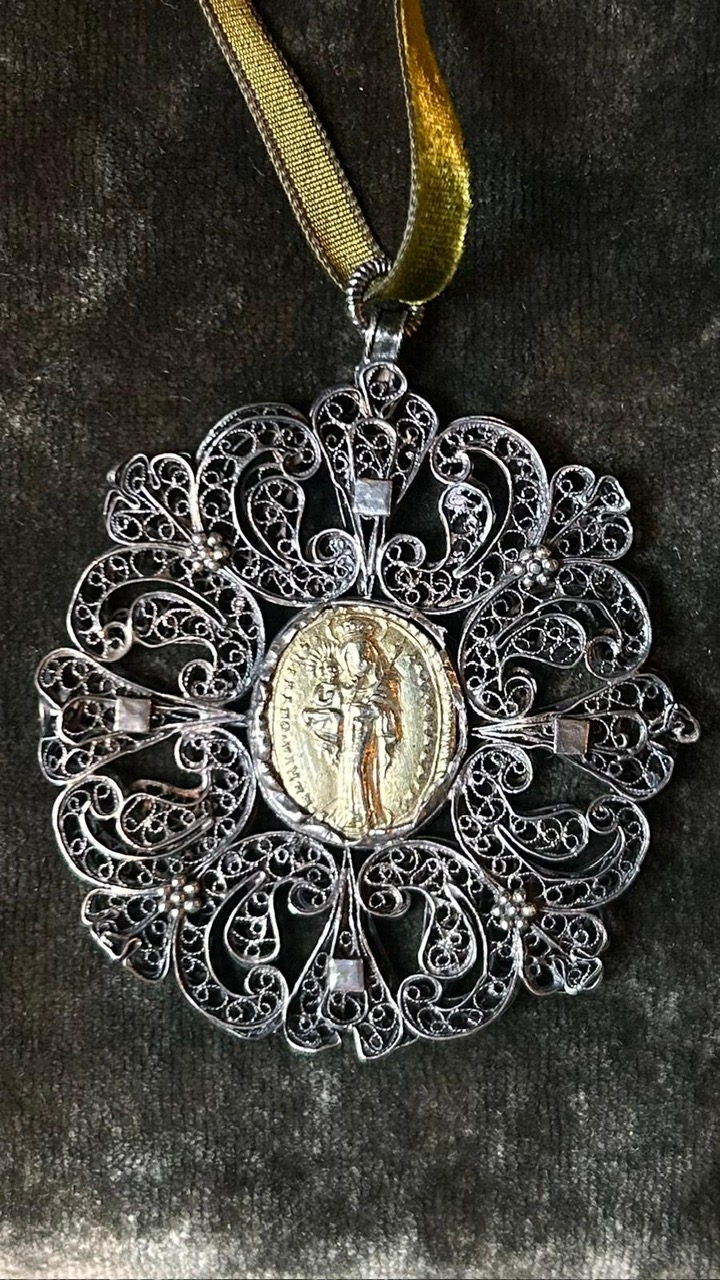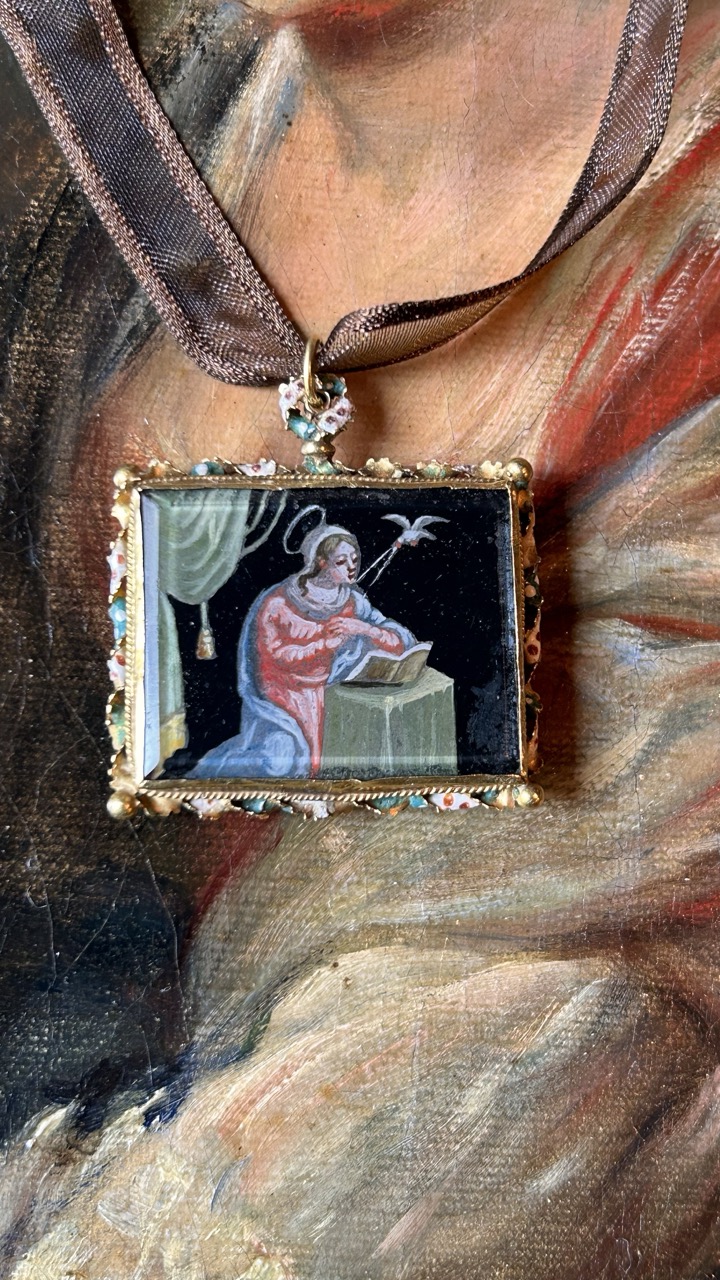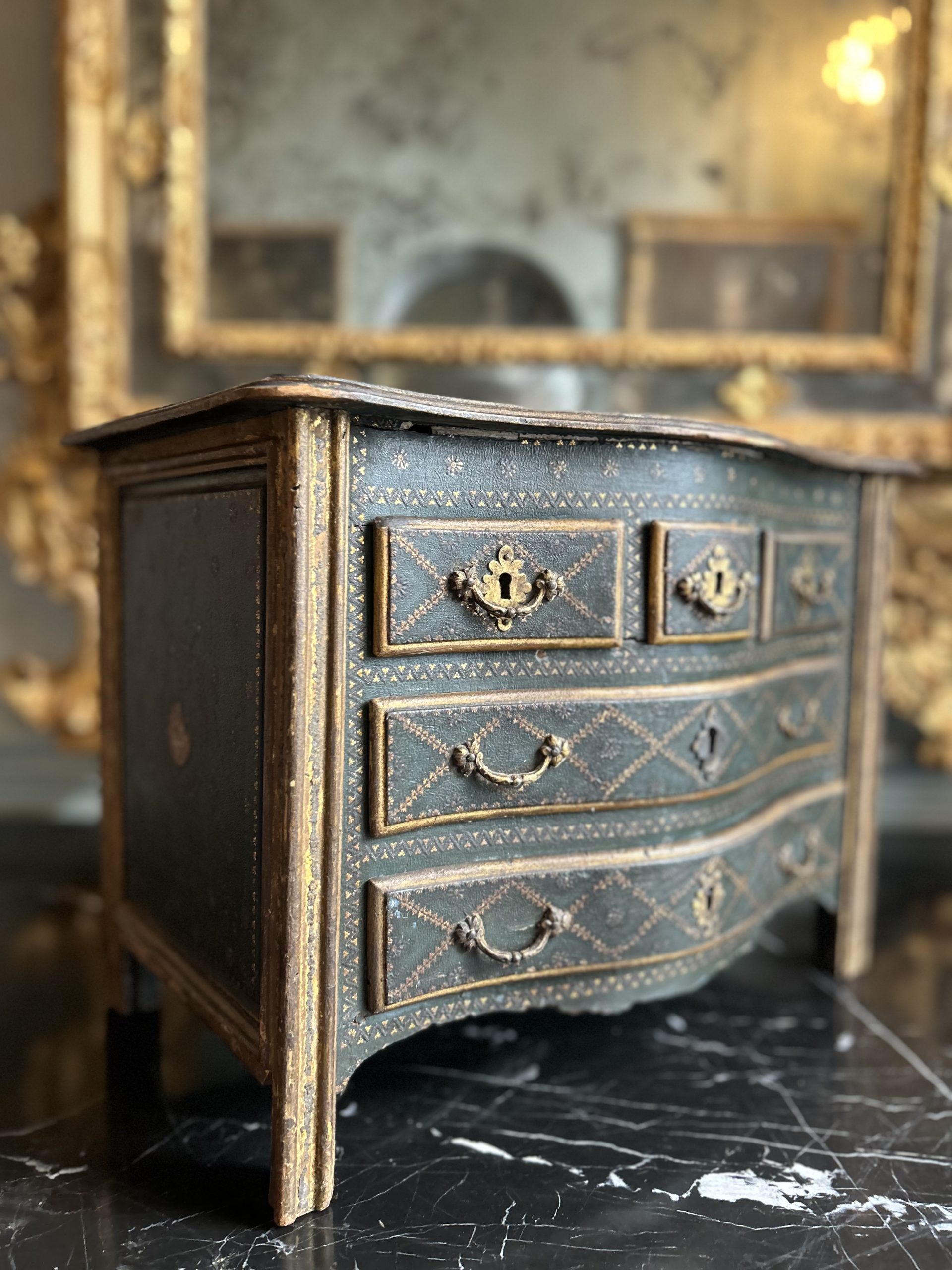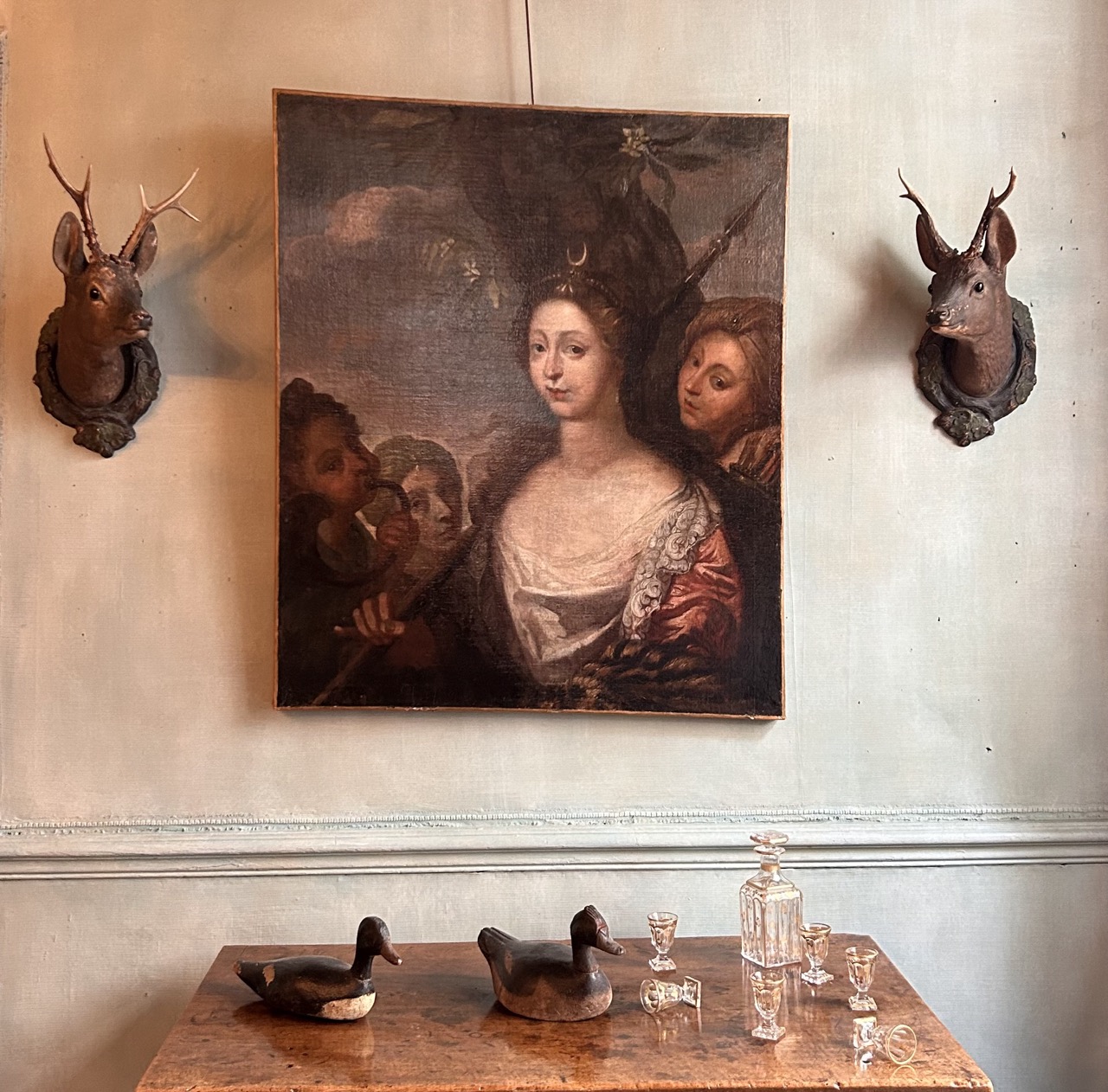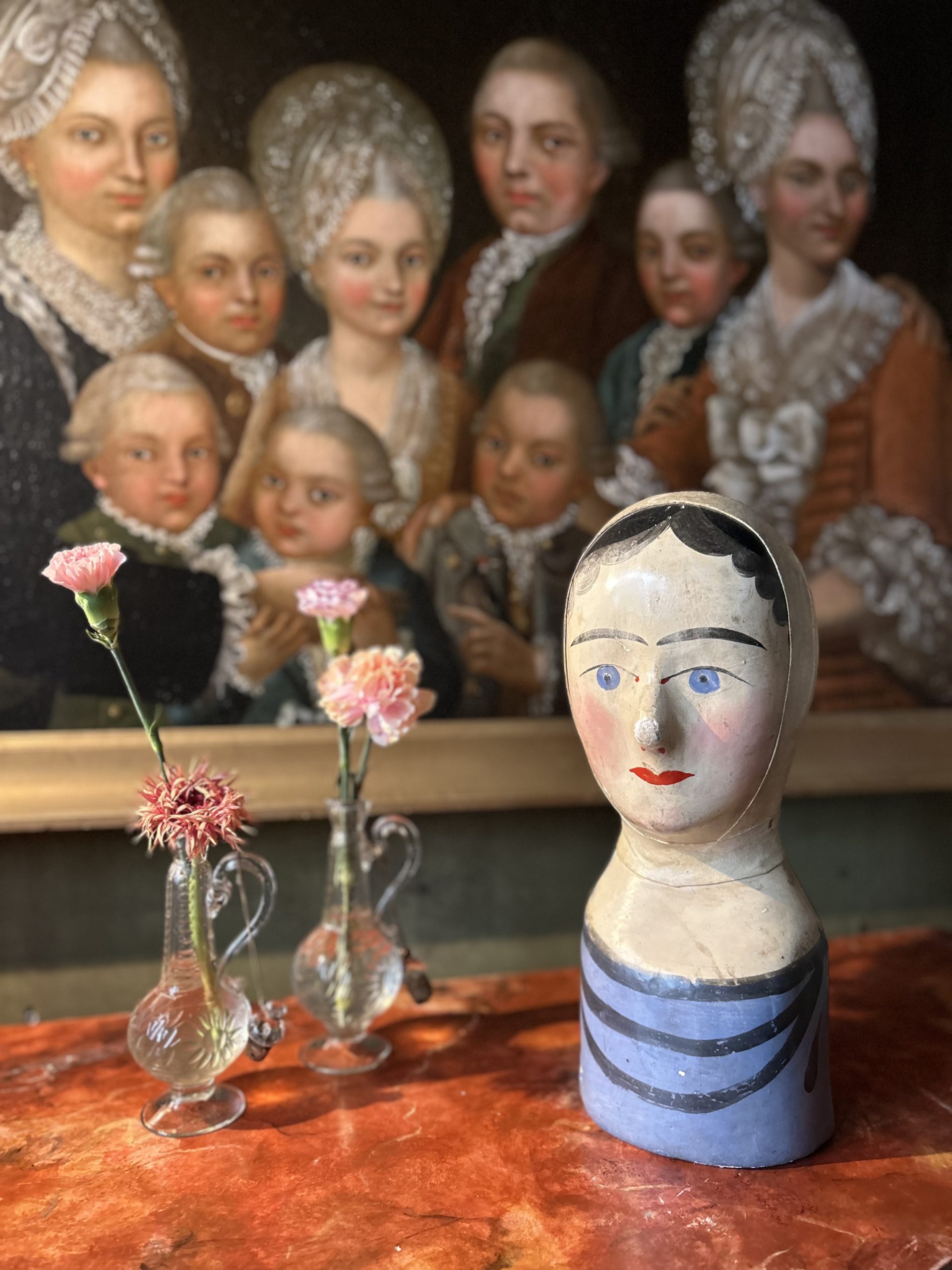This cherub symbolizes love and romance, with classic attributes such as wings and a bow. The letter he holds adds a narrative dimension, suggesting a message of love.
A pair of table lamps in lacquered sheet metal, feet in the shape of golden lion legs. Each lamp is equipped with an adjustable metal shade that is supposed to be lowered to the flame so that it does not dazzle.
Originally designed for the French card game Bouillotte which was popular in the 18th and 19th centuries, similar to the modern poker game, the Bouillotte lamp was in the center of the gaming table. As the game progressed.
These Bouillottes lamps bring a touch of timeless elegance to any interior, combining old charm and functionality.
19th century
France
Made using the traditional filigree technique typical of 17th-century Spanish craftsmanship the medallion features meticulous work of intertwined silver threads creating complex and detailed openwork designs.
Miniature pendant- double-sided painted fixed under glass representing the Virgin Mary and Saint Joseph, yellow gold frame decorated with spiral patterns in enamelled polychromy.
Spain
17th century
Mastery chest transformed in a jewelry box in gilded polychrome wood opening on 5 velvet lined drawers inside, locks and handles in gilded metal.
19th century
France
Pair of vases in slip, motifs of flowers and dragonflies.
France
Circa 1900
Pair of sconces in the shape of deer heads in terracotta painted natural, glass eyes.
Germany,
19th century
Marotte in polychrome wallpaper and glued printed paper, presenting a female figure with black hair and scalloped bodice.
19th century
France
Pair of Staffordshire thick fireplace dogs hand painted in black and white polychrome porcelain with typical gold collar.
United Kingdom
19th century
Dog carved in earthenware, glass eyes, probably from Bavent.
France
Circa 1900



